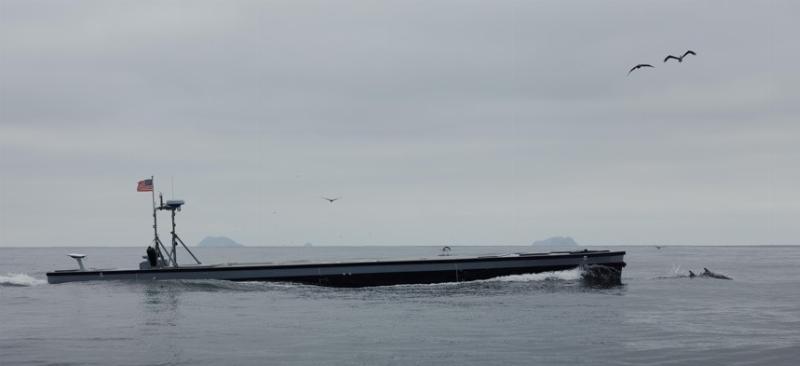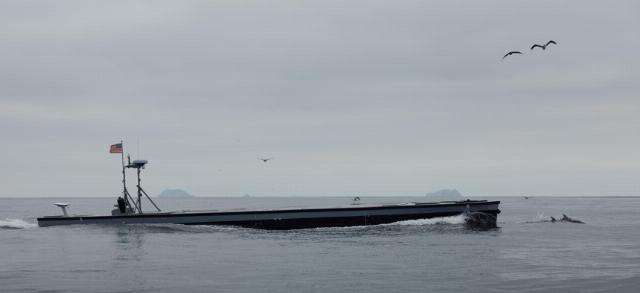


As reported by ZeroHedge, the U.S. Marine Corps is testing a vessel called the Sea Specter, part of a broader effort to adapt “narco sub” technology, intended to be used for operations in the Indo-Pacific. These vessels, modeled after low-profile smuggling craft used by Latin American drug cartels, are being militarized to move supplies covertly.
The Sea Specter is a semi-submersible, nearly invisible to radar, with a profile just inches above water, which is ideal for stealth logistics. It is being developed under the Autonomous Low-Profile Vessel (ALPV) program, and built by Leidos, a major U.S. defense contractor.
At sixty-five feet, the Sea Specter can haul a payload up to five tons and can travel 2,300 nautical miles at eight knots. It can be remotely operated and is entirely autonomous, capable of route planning and obstacle avoidance, and is marked by its low radar signature.
Notably, the Sea Specter is designed to be “attritable.” This means that it is cheap enough to risk losing in wartime without major cost.
This is where the geopolitical aspect becomes more heightened. This tech is not merely designed for peacetime logistics. It is being developed for a conflict with China. The U.S. is anticipating a potential war over Taiwan (the U.S. recently demanded that our allies’ clarify their possible roles in this increasingly probable war), where American forces would face heavy missile, naval, and aerial threats from the People’s Liberation Army (PLA).
China’s Anti-Access/Area-Denial (A2/AD) strategy is designed to push U.S. forces out of the region by threatening bases, ships, and airfields. In that kind of high-risk theater, traditional supply lines are vulnerable -- a cargo ship or a C-130 is a gigantic target. This is why these small, stealthy, unmanned, and importantly, inexpensive vessels are becoming a focus for testing. These can supply Marine units while passing through Chinese surveillance networks. According to ZeroHedge, “Bowles says the Marines may want to send a dozen narco subs on such a supply run in wartime, to allow for half of them to be blown up by China.”
Yet few Americans realize just how far the Pentagon is moving toward unconventional, almost insurgent-style tactics to overcome Chinese dominance in the Pacific. The military is adapting unconventional, even outlaw tactics to prepare for war with a near-peer adversary. This signals a major shift in military thinking: stealth, resilience, and decentralization are now priorities. The Sea Specter is just one vessel that the public aware of. It may be only one piece of a larger unmanned logistics network.
As the communist, anti-American superpower China continues to rise, the question is no longer if the world will confront war with Beijing, but when. Americans must brace for this inevitability -- not with appeasement, but with bold preparation, innovation, and resolve.
Daniel C. Green is the founder of The Eagle Eye, a journalism, commentary, and multimedia platform covering politics, geopolitics, culture, and Christianity. His company’s website is theeagleye.net and he is @theeagleyenews on Substack.

Image: Leidos
